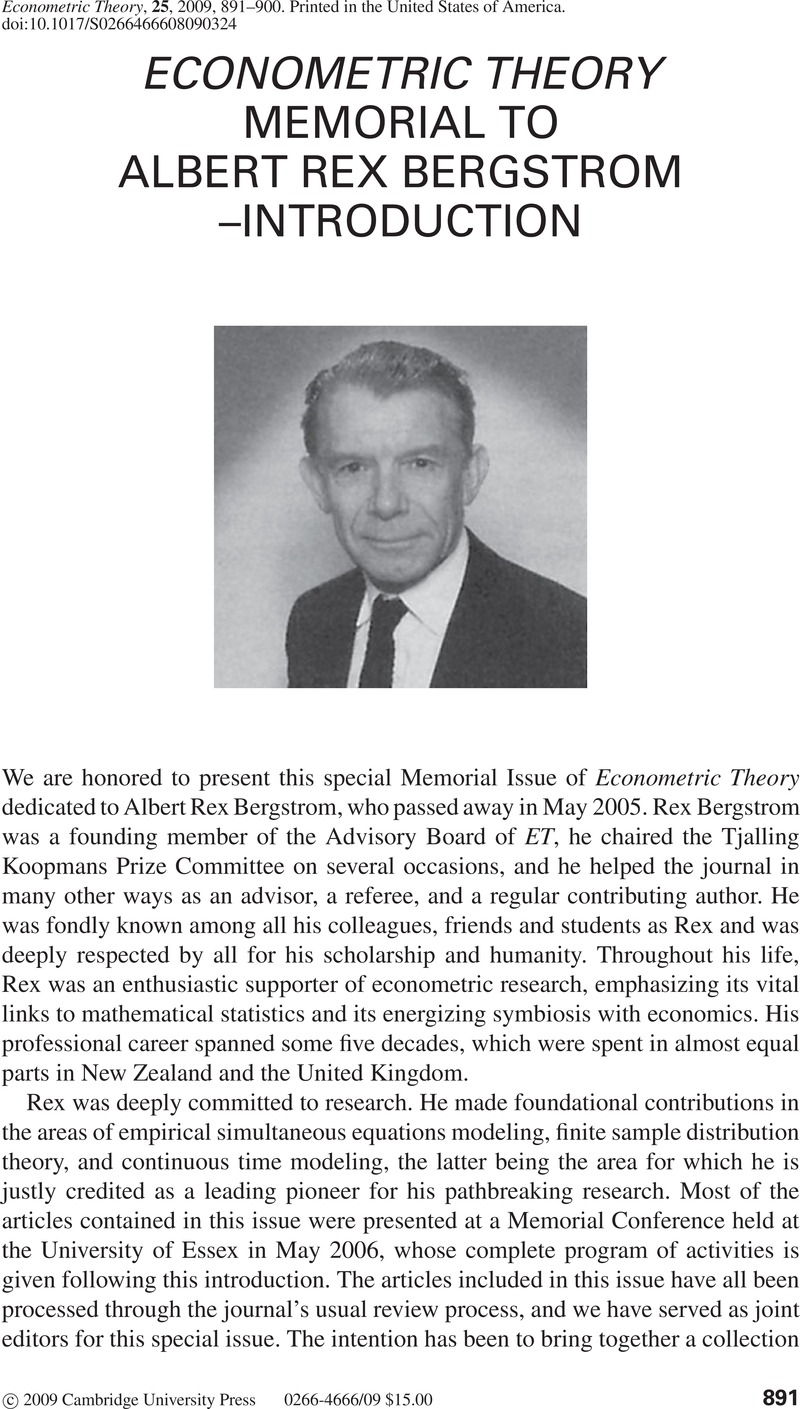Article contents
ECONOMETRIC THEORY MEMORIAL TO ALBERT REX BERGSTROM–INTRODUCTION
Published online by Cambridge University Press: 01 August 2009
Abstract

- Type
- INTRODUCTION
- Information
- Econometric Theory , Volume 25 , Issue 4: Bergstrom Memorial Dedication Issue , August 2009 , pp. 891 - 900
- Copyright
- Copyright © Cambridge University Press 2009
References
REFERENCES
- 1
- Cited by


